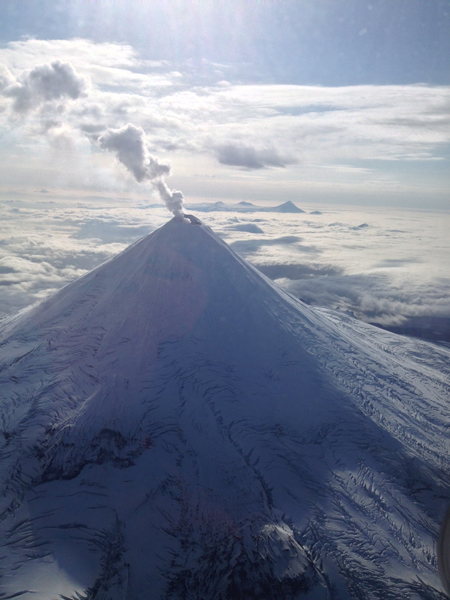Two volcanoes in the Aleutian chain have been showing signs of activity for years, but recent satellite images prompted the Alaska Volcano Observatory to raise its alert level and aviation color code.

Satellite imagery shows elevated surface temperatures in the summit crater at Cleveland Volcano, roughly 140 miles west of Dutch Harbor. John Power is the Scientist in Charge at the Alaska Volcano Observatory.
“So, we’re seeing warm ground, increased thermal activity at the summit. Some of the radar images that we have suggest that new lava has been extruded forming a small lava dome in the volcano summit crater.”
Scientists at the AVO have raised the alert level for Cleveland to ‘advisory.’ The aviation color code has also been set to yellow.
“We have heightened the alert levels at Cleveland so that folks are aware that there is the possibility of increased hazards associated with any eruptive activity that might occur beyond what’s apparently already gone on.”
Cleveland volcano has been extremely active for the past decade. Power says it’s one of the most active volcanoes in the Aleutian Chain. But the majority of that activity has come in the way of small, long-term, low-level eruptions.
A similar scenario is playing out roughly 125 miles to the east of Dutch Harbor at Mt. Shishaldin.
“What we see there is Shishaldin has a very deep summit crater and down in the bottom there’s activity going on. We see increased temperatures again in satellite imagery and we believe that there’s active magma pooling deep inside that summit crater.”
Shishaldin is the tallest volcano in the Aleutians, towering more than 9000 feet above sea level. The alert level there is currently set to ‘watch.’ The aviation color code is orange. Power says the volcano occasional emits small amounts of ash. He says Shishaldin has been in a low-level state of eruption for over a year.
Despite the recent increase in activity, Power says there’s no indication of any major eruptions from any of the volcanic centers throughout the Aleutian Chain.




